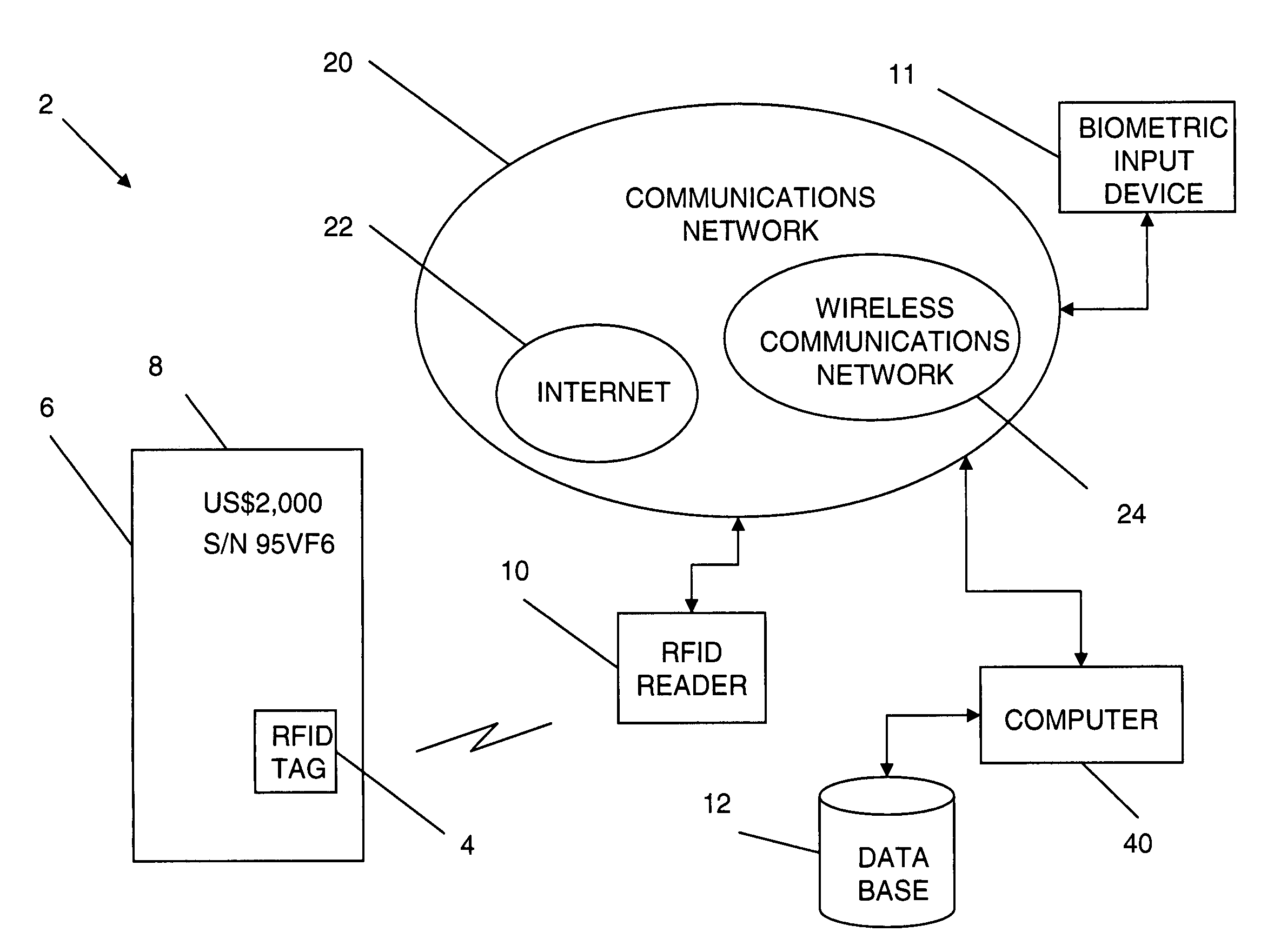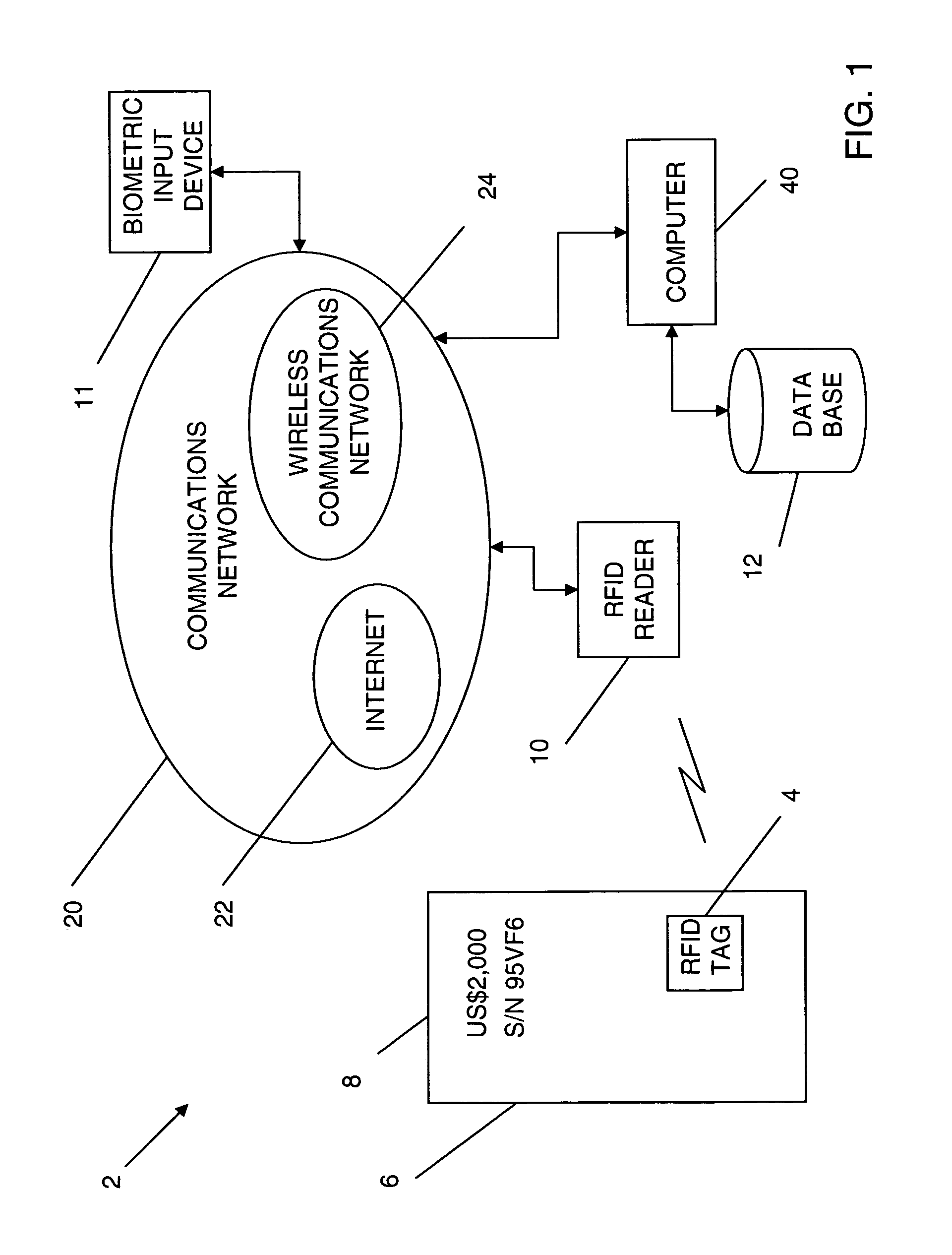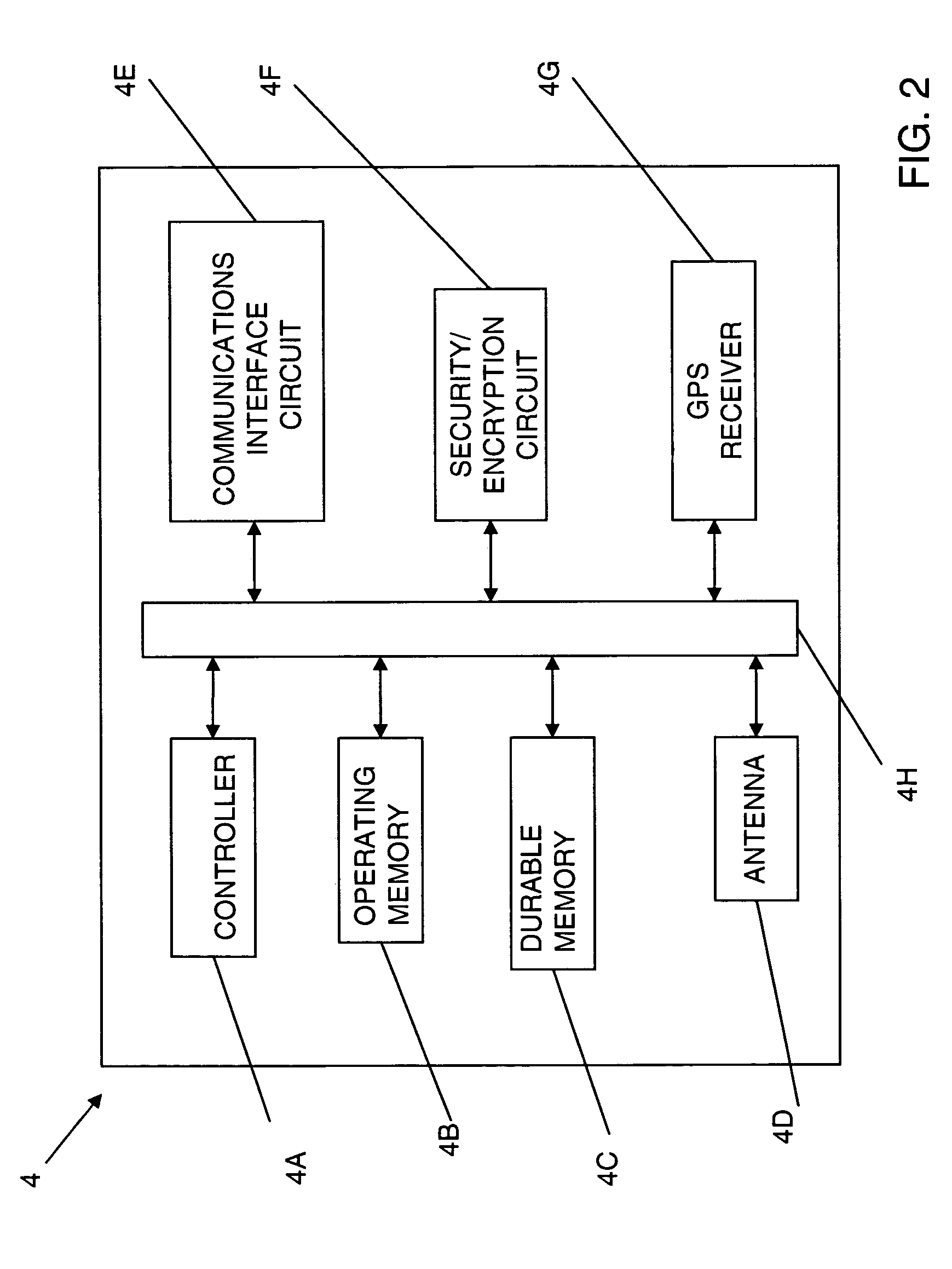Secure personal RFID documents and method of use
a personal rfid and document technology, applied in the field of secure personal rfid documents and methods of use, can solve the problems of inability to see the birth registration process, process does not anticipate or suggest original storage, and line-of-sight process that has inherent limitations in speed and reliability, so as to improve the management and use of documents
- Summary
- Abstract
- Description
- Claims
- Application Information
AI Technical Summary
Benefits of technology
Problems solved by technology
Method used
Image
Examples
embodiment 2
[0088]Referring now generally to the Figures and particularly to FIG. 2, FIG. 2 is a schematic diagram of the RFID circuit tag 4 of FIG. 1. The RFID circuit tag 4, or RFID tag 4, has a controller 4A, an operating memory 4B, a durable data memory 4C, an antenna 4D, a communications circuit 4E and a security / encryption circuit 4F. Data identifying and authenticating the identity of the RFID 2 tag are stored in the durable data memory 4C. In certain alternate preferred embodiments of the present invention the RFID tag 4 may comprise logical circuits and / or programmable logic circuits that direct aspects of the operation of the RFID tag 4 and may partially or wholly execute the operations of the RFID tag 4 without reliance upon a software program stored within or transmitted to the RFID tag 4. In the preferred embodiment 2 of FIG. 1, the RFID tag 4 has a software program at least partially stored within the durable memory 4C, and relied upon to direct the operation of the RFID tag 4. Th...
embodiment 14
[0091]Referring now generally to the Figures and particularly to FIG. 4, FIG. 4 is a yet alternate preferred embodiment 14, or print system 14, of the present invention comprising a printer 16, a database 18 communicating with the printer 16 via a communications network 20 and the RFID document 2 of FIG. 1. The communications network 20 may be or comprise via the Internet 22 and / or a wireless electronic communications network 24, and / or an electronic telephonic network 26. The substrate 6 is inserted into the printer 16 whereby the visual pattern 8, as shown in FIG. 1, is formed on the sheet 6 by a printer head 28. The reader 10 accepts data from the remote database 12 via the communications network 20 and / or a local source 30, such as a keyboard, and transmits the data to the RFID tag 4 to initialize the RFID tag 4 or to update the data stored in the RFID tag 4. A printer controller 32 receives data and instructions from the remote database 12 over the Internet 26 and via an interf...
embodiment 86
[0126]Referring now generally to the Figures and particularly to FIG. 11 and FIG. 12. FIG. 11 illustrates an alternate preferred embodiment 86 of tag 4, or RFID 86. FIG. 12 is a schematic diagram of a data encryption circuit 4F of tag 4 or RFID 86. FIG. 11 provides a block diagram for the secure RFID 86. Although important, the power generation and regulation circuits, the digital command decoders and control, sensor interface module, the new C1V2 interface protocol, and the power source, (all shown in green fill) are all based on industry-proven technology and are known to those skilled in the art.
[0127]Note that the RFID 86 includes a Class-2 or higher tag that includes highly-simplified, effective, security encryption circuit 4F like the one shown in FIG. 12, or other suitable encryption circuit known in the art. Class-2 and higher circuits show how existing symmetric double-secret-code encryption systems can be improved and simplified at the same time. To prevent eavesdropping, ...
PUM
 Login to View More
Login to View More Abstract
Description
Claims
Application Information
 Login to View More
Login to View More - Generate Ideas
- Intellectual Property
- Life Sciences
- Materials
- Tech Scout
- Unparalleled Data Quality
- Higher Quality Content
- 60% Fewer Hallucinations
Browse by: Latest US Patents, China's latest patents, Technical Efficacy Thesaurus, Application Domain, Technology Topic, Popular Technical Reports.
© 2025 PatSnap. All rights reserved.Legal|Privacy policy|Modern Slavery Act Transparency Statement|Sitemap|About US| Contact US: help@patsnap.com



